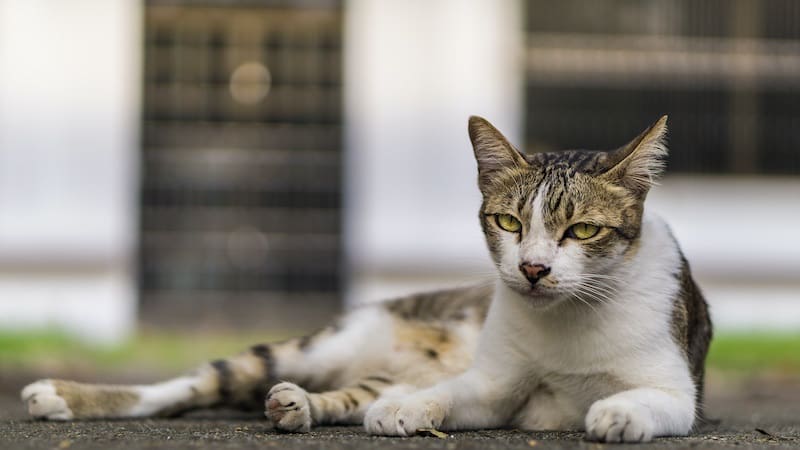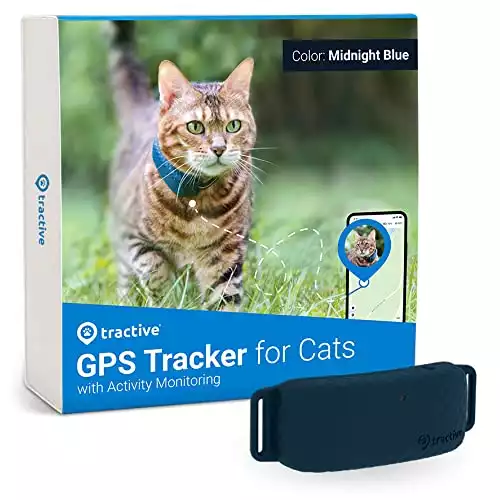Cats are beloved pets, but can indoor cats find their way home if they run away or escape? It’s a perplexing question that many pet owners face. From keeping neighbourhood cats out of your garden to caring for an indoor cat and tracking technology assistance to help locate them should they go missing – these topics will all be discussed here.
Can Indoor Cats Find Their Way Home? The answer is not as simple as yes or no. While it is true that indoor cats have some survival skills they may still struggle when it comes to finding their way back home. Cats rely heavily on scent and memory when navigating, so if they find themselves outside of their home environment, they may become disoriented and confused about where they are.
Reasons Why Indoor Cats Run Away:

There are several reasons why an indoor cat might choose to leave its home environment. Curiosity could be one factor as cats love exploring new places or scents that catch their attention; sometimes these explorations take them farther than expected.
Another reason for a cat leaving its owner’s care could be stress or anxiety caused by changes in the household such as moving or introducing a new pet into the family.
Chances are though that your cat either wants to mate or hunt. If you haven’t had your cat spayed or neutered and your cat is obsessed with going outside, there’s a good chance that this is one of the main reasons your cat could run away and got lost.
If there are a lot of outdoor cats, feral cats and/or stray cats roaming your neighborhood and your cat is unaltered you should take extra precautions to prevent them from running away.
Recap: Indoor cats may, for whatever reason, wander off and become lost; thus, it is critical for pet owners to be aware of what can lead to this behaviour. Stressful situations or the desire to mate or hunt may prompt a cat’s escape from home.
How Far Can A Lost Cat Travel?
One of the most disquieting queries when a cat is missing is how far they can get in such a brief period. It’s not easy to predict the range a cat might roam due to their diverse traits and habits. Factors like age, breed, health status, and even environmental conditions can all influence how far a lost cat might wander away from home.
Considering age is essential when attempting to calculate how far a missing feline may have gone. Young kittens are more likely to stay close by as they don’t have much experience navigating unfamiliar areas or finding food sources outside of their home environment. Older felines, accustomed to meandering, may be able to cover greater distances given enough time.
The breed of your indoor cat can also play into how far they might go if they get out on their own accord or become separated from you during an outing together. Some breeds like Siamese cats tend to be curious explorers while others like Maine Coons prefer sticking closer to familiar surroundings.
Knowing which type of cat you’re dealing with will help narrow down potential search areas should they ever go missing unexpectedly.
Health status is another key component in understanding how far your cat could potentially roam before returning home again safely on its own power or with assistance from kind strangers or animal rescue organizations along the way.
Taking environmental conditions into account is a must when attempting to gauge how far a lost cat could travel. Adverse weather such as heavy rains, storms, and snowfall can make traversing terrain difficult without proper shelter and sustenance, thus confining the feline’s potential destination to areas within reach of both its starting point and final destination.
A missing cat can travel quite far in search of their home, however the use of tracking technology may be able to help locate a missing pet. Tracking technologies offer many benefits and limitations which should be taken into consideration when looking for a lost cat.
Recap: A cat’s age, breed, health status and environmental conditions can all play a role in how far it might wander if lost; however, younger cats are typically more confined to their home area than older ones. Additionally, adverse weather or terrain may further restrict the feline’s range of travel when trying to make its way back “home sweet home”.
Tracking Technology Assistance for Finding a Missing Cat
Using tracking technology can help owners locate and reunite with their missing cats. There are various tracking technologies available for pets, including GPS collars, radio-frequency tags, and Apple Tags.
These devices can provide cat owners with peace of mind that their beloved feline friend is safe and sound if they ever find themselves in unfamiliar territory.
GPS collars are the most popular type of tracking technology for pets. They use satellites to pinpoint the exact location of your cat in real time, allowing you to quickly find them should they wander off or get lost.
Radio-frequency tags work similarly but don’t require satellite signals; instead, they rely on local radio towers to track your cat’s whereabouts. These don’t have the range of GPS but are a cheaper option as they don’t require a monthly subscription.
Apple AirTags offer a modern way to keep track of your furry friend. Utilizing BLE tech, the tag will alert you to its position every time an apple device is within range of the tag. If they’re lost in town then an Apple AirTag will probably work fine but if they’re in the countryside and away from people carrying their iPhones then it’s not going to be much use.
Overall, tracking technologies offer cat owners peace of mind knowing that if their furry companion goes missing they’ll have access to up-to-date information about their whereabouts right away, potentially saving valuable time during those crucial first few hours after a disappearance occurs.
By utilizing this advanced technology combined with common sense safety precautions like keeping cats indoors at night and never letting them roam freely outside unsupervised, we can ensure our beloved felines stay safe while also having fun exploring your garden.
-
 4.0$72.99
4.0$72.99Track your cat and get instant alerts to your smartphone if he gets out of your garden.
More infoPros:- Easily find your cat
- See where he's been
- Fits any cat collar
Cons:- Requires a subscription - from $5 a month
I may earn a commission if you make a purchase, at no additional cost to you.
09/09/2024 10:21 pm GMT -
 4.5
4.5A cat collar with built in Air Tag holder (not supplied). With the Air Tag costing under $30
this is probably the cheapest cat tracker with the total cost under $45
More info AirTag PricesPros:- Great price
Cons:- You need an Apple device to receive alerts
- Alerts only tell you where it was last seen, it doesn't track live
I may earn a commission if you make a purchase, at no additional cost to you.
Keeping Your Indoor Cat Safe From Harm
Precautions You Should Take Before Letting Your Pet Outside:
Prior to permitting your indoor feline into your garden, it is essential to make sure they are wearing a cat collar with an ID tag containing all the necessary information in case of any mishaps or injuries.
Additionally, you should check for any potential hazards like poisonous plants or areas where predators may be lurking before allowing them out of the house. Finally, always keep your cat indoors at night when there is less activity outside and more chances of them getting into trouble.
Keeping your cats safe while inside by making sure all windows are securely closed so they don’t take the opportunity to escape.
Providing a cat tree with scratching posts and other items for them to play with will help reduce boredom as well as their urge to scratch furniture or climb on counters which could lead to injury or damage of property.
Lastly, make sure all cords from electronics are tucked away safely and disconnected so they aren’t tempted to chew on something that could shock them.
Conclusion
It is possible for a lost pet to find its way home if it runs away. The likelihood of missing cats returning home is contingent on a variety of factors, such as the distance traveled and their familiarity with the area.
If your cat does go missing, tracking technology assistance can help you locate them quickly and easily so that you can bring them back safely. Therefore, while we cannot guarantee that an indoor cat will be able to make its way back home unassisted every time – there are measures available which may increase the odds in favor of a successful return to home.
Take proactive measures to secure your garden with a cat proof fence or use a large cat enclosure to ensure your pet cannot run away. Provide an enriched environment for indoor cats with plenty of stimulating toys, activities, as well as safe outdoor access if possible.








